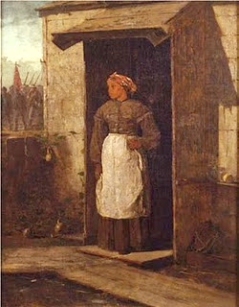This review, my first book review, originally appeared in the November/December 2010 Art New England.
“All Stuart’s pictorial interest tended to focus on the human face,” writes art historian Robert Hughes of George Washington’s famed American portraitist Gilbert Stuart. “The remarkable thing was that he could fake the sense of direct confrontation between painter and sitter so well that not a few of his Washington replicas, some done years after Washington’s death, seem to preserve it.”
Chuck Close is the only American painter to ever rival Stuart in his candid concentration on the human face. Christopher Finch’s Chuck Close: Life begins with a fleeting reference to Stuart, with the author on the Metropolitan Museum of Art’s steps. The instance sets a subtle tone for Finch’s epic biography, a companion to his 2007 Chuck Close: Work. Finch intimately observes Close’s established reputation as a Process artist aligned with the likes of Minimalists such as Brice Marden or Richard Serra, but positions Close’s larger legacy as that of a distinctly American artist. Like American masters such as Stuart, John Singleton Copley or Thomas Eakins, Close uses the face, or head, as a motif in his larger explorations into Modern and Post-Modern aesthetics. Finch deftly weaves Close’s life and work into that of the mythic American artist as pioneer, rising above provincial beginnings through honest ingenuity and practice in order to contribute to the broader scope of contemporary art history. “Chuck Close is a self-made New Yorker, and a master of the New York School of painting, but beyond that he is an American artist, in the sense that Vermeer is Dutch, and Cezanne French—representative of an entire culture,” writes Finch in his first chapter.
Close’s childhood, typical of post-war America, was marred by the traumatic and untimely death of his father as well as numerous physical and learning disabilities. His father an inventor, his mother an aspiring musician, Close was born on July 5, 1940 in Monroe, Washington. Close as a precocious and determined child and young adult emerges through Finch’s careful study of family photographs and memorabilia, as well as exhaustive interviews with family members and Close himself. Finch conjures young Close diligently memorizing facts in the bathtub to overcome his dyslexia and learning magic tricks to amuse bullies who tease him for his thick glasses. It is this Close, argues Finch, systematic and industrious in his triumph over trouble, who is the archetypical pragmatic American artist.
Close began his career not in a sophisticated atelier in Paris or New York, but at Everett Junior College in his native Washington. Close enrolled at EJC to become a commercial artist, but he soon aspired to become a painter, akin to such contemporary revolutionaries as Jackson Pollock and Willem de Kooning. Close’s admiration and replication of de Kooning’s loose, bravura style would haunt him for at least a decade, and Finch astutely analyzes de Kooning’s legacy on Close’s student and mature work. At EJC and later at the University of Washington, and ultimately Yale, where Close received an MFA, Close’s aesthetic mimics de Kooning’s bold, broad strokes, but never disregards figuration. Finch’s narrative winds us through Close’s struggle to shake de Kooning’s formal legacy in order to find his meticulous painterly, pixilated style and signature motif, the head.
Like Stuart, Close documents his sitters’ head once. Working from photographs, Close recycles a likeness through various formal and technical concerns. And, just as Stuart did, Close captures a sense of vivid present-ness in his work. However, Close relies on distinctly Modern and Post-Modern methods of art making to achieve an illusion of reality.
Finch’s examination of Close’s evolution from Abstract Expressionism to Process Art, and his provocative blend of the two, gracefully positioned within the greater cultural context of post-war America, is the biography’s principal strength. “For the generation that followed, the sense of scale found in Abstract Expressionism fit in well with other concerns, such as an interest in the sheer size of the pictorial content encountered in such archetypically American forms of expression as Times Square billboards and CinemaScope movies,” writes Finch. “In a real sense, this monumental increase in scale tends to make that most figurative of figurative subjects, the human likeness, less representational and more abstract.” In portraying his “heads,” Close summarizes his sitters into intangible particles of color and shape–a delicate Abstractionism conflated with the scrupulousness of Process. Finch argues this hybrid is a product of Close’s over-arching interest in illusionism found in old masters as much as Saturday Evening Post covers.
Finch’s intimate and decades-long friendship with Close is at the core of his biography, and affords us to penetrate deeply private episodes of the artist’s life and career. Descriptions of “The Event,” or Close’s middle-age metamorphosis into a functioning quadriplegic, are the most affecting passages. Finch’s prose can be jolting and verbose at times; however, his understanding of Close’s context and art historical legacy are significant, equivalent to Lloyd Goodrich’s Thomas Eakins.
